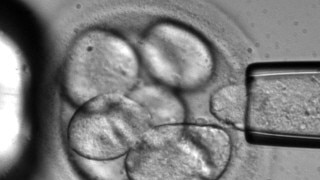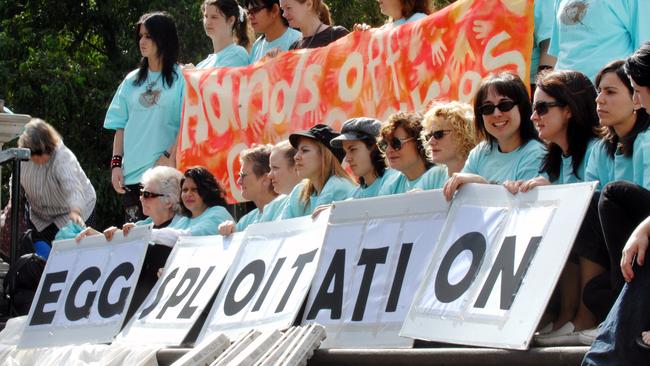Genomic editing is no magic bullet for inherited ills
With myriad ethical and practical problems, the government has kept its proposed ‘three-parent-baby’ legislation under the radar.

One thing that the exhausting embryo stem cell debate has taught us is that if it sounds too good to be true, and if it has ethical problems, then perhaps it is too good to be true.
An important issue that is not really being addressed is the proposed bill to allow mitochondrial DNA transfer. Mitochondrial DNA provides the genetic blueprint for proteins that carry out cellular functions. It is susceptible to mutations, and if these mutations lead to the production of damaged mitochondria, they can cause a whole class of diseases called mitochondrial diseases.
Scientists have developed two techniques aiming to eliminate the disease-producing mitochondria. Both are difficult.
The simpler of the two techniques involves the removal of the healthy mitochondria from a donated ovum into a denucleated ovum from a mother who is a carrier of mitochondrial disease. The resulting ovum can then be fertilised in the normal way.
The more difficult and ethically contentious technique involves two fertilised ova, which means two early embryos. Since it is necessary to have a third party to donate the egg, mitochondrial transfer has sometimes been called in media-speak the “three- parent baby”.
So, with myriad ethical and practical problems the government has kept this legislation under the radar to avoid another virulent ethical debate such as the embryonic stem cell and cloning debates in 2002 and 2006. Remember embryonic stem cells promised all sorts of wonderful cures for everything from paraplegia to Alzheimer’s? But they were a therapeutic dead end and dangerous, unlike autologous stem cells, now used routinely to treat a range of disease successfully. What is worse, using ES cells involved the production and destruction of human embryos.

The public submissions and consultation period on legalising mitochondrial transfer ends on March 15. Most people know nothing about it. It has been advertised as all good to cure mitochondrial disease and it has been legal in Britain since 2015. So far there has been only one birth in the world using this technique to avoid mitochondrial disease, in Mexico, where there is no regulation about any of this.
However, not all researchers are equally enthusiastic about the eventual promise of this technique. The fear is that concentration on it may divert resources for research away from therapy and other forms of cure.
Also, many think a major difficulty of the transfer technique is the reliance on egg donations eventually making it a technique for the well-heeled few. Donation of eggs is a complex process that can be risky for the donor due to development of ovarian hyperstimulation syndrome. Inevitably, poor women will be selling their eggs for the good of the better off.
There are several other problems. First, it is known that the technique does not guarantee the complete removal of faulty mitochondria as the complete extraction of a nucleus without some mitochondria remaining attached to it is tricky even for experts. If these faulty mitochondria find their way into the embryo, it will tip off the balance between healthy and faulty mitochondria, and the disease still may continue in subsequent generations.
Furthermore, there may also be a risk of mismatch between the surrogate and the donor mother. Scientists have to grapple with manipulating the germ line — and hence most of the implanted embryos would probably be male, because they are less likely to pass on the disease. Finally, society (and politicians) has to grapple with the fact, despite their outward physical characteristics, the child conceived has the DNA from three parents — which raises all sorts of separate ethical and legal questions.
Interestingly, there is a seemingly almost “too good to be true” magic bullet scenario on the horizon. Since 2015, genomic editing has advanced rapidly and the chances of finding a true cure for mitochondrial disease by this means are far greater now than when Britain licensed mitochondrial donation.
In September last year, Science News reported that although gene editing to make heritable changes in human DNA isn’t yet safe and effective enough to use in humans, the International Commission on the Clinical Use of Human Germline Genome Editing published a report on September 3 that laid out the way forward for gene editing, “should society decide that kind of DNA alteration is acceptable”. Now that is something else to think about.




Inherited disease is a terrible thing and parents struggling with these afflictions naturally want to diminish the chances of having a child with a possible life-threatening disease. I know how they feel. I have three children with a rare inherited syndrome that has caused a great deal of suffering for them. I know that when people are in such a position, they become singularly focused on the desperate search for the “magic bullet”.